| Date | Text | |
|---|---|---|
30 Nov 1887

International Exhibition of Science, Art and Industry |
International Exhibition of Science, Art and Industry International Exhibition of Science, Art and Industry, in Glasgow, Scotland |
|
30 Nov 1887

Nice Observatory |
Nice Observatory (astronomy) The 76 cm refracting telescope is completed at Nice Observatory. |
|
30 Nov 1887

John Louis Emil Dreyer |
John Louis Emil Dreyer (astronomy) John Louis Emil Dreyer's New General Catalogue is published. |
|
30 Nov 1887
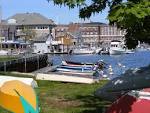
Marine Biological Laboratory |
Marine Biological Laboratory (biology) Seventeen biologists found the Marine Biological Laboratory in Woods Hole, Massachusetts, USA, which will become a major center of applied research. |
|
30 Nov 1887

Peter Hermann Stillmark |
Peter Hermann Stillmark (biology) Peter Hermann Stillmark describes the isolation of ricin, thus founding the field of lectinology. |
|
30 Nov 1887

Methyl isocyanate |
Methyl isocyanate (chemistry) Methyl isocyanate is discovered. |
|
30 Nov 1887
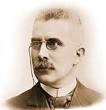
Henri-Louis Le Chatelier |
Henri-Louis Le Chatelier (chemistry) Henri-Louis Le Chatelier states that the response of a chemical system perturbed from equilibrium will be to counteract the perturbation. |
|
30 Nov 1887

Emil Fischer |
Emil Fischer (chemistry) Emil Fischer establishes the relation between glucose, fructose and mannose by passage to a common osazone. |
|
30 Nov 1887

American Mathematical Society |
American Mathematical Society (mathematics) The American Mathematical Society is founded by Thomas Fiske. |
|
30 Nov 1887

Hilbert's basis theorem |
Hilbert's basis theorem (mathematics) Hilbert's basis theorem is first proved by David Hilbert. |
|
30 Nov 1887

Francis Galton |
Francis Galton (mathematics) Francis Galton introduces the concept of correlation in statistics. |
|
30 Nov 1887
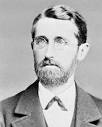
Richard Dedekind |
Richard Dedekind (mathematics) Richard Dedekind publishes Was sind und was sollen die Zahlen? ("What are numbers and what should they be?") which includes his definition of an infinite set. |
|
30 Nov 1887
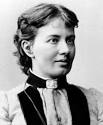
Sofia Kovalevskaya |
Sofia Kovalevskaya (mathematics) Sofia Kovalevskaya discovers the 'Kovalevskaya Top'. |
|
30 Nov 1887

1883 |
1883 (meteorology) The global atmospheric temperature returns to normal, five years after the 1883 eruption of Krakatoa (Krakatau). The volcanic dust veil, that has created spectacular atmospheric effects, also acted as a solar-radiation filter, lowering global temperatures by as much as 1.2 degrees Celsius in the year after the eruption. |
|
30 Nov 1887
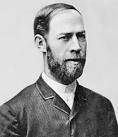
Heinrich Rudolf Hertz |
Heinrich Rudolf Hertz (physics) Heinrich Rudolf Hertz discovers radio waves. |
|
30 Nov 1887

Giovanni Martinotti |
Giovanni Martinotti (physiology and medic) Giovanni Martinotti describes cortical cells later known as Martinotti cells. |
|
30 Nov 1887
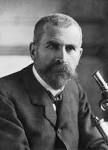
Emile Roux |
Emile Roux (physiology and medic) Emile Roux and Alexandre Yersin isolate diphtheria toxin. |
|
30 Nov 1887
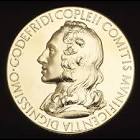
Copley Medal |
Copley Medal (awards) Copley Medal: Thomas Henry Huxley |
|
30 Nov 1887
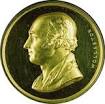
Wollaston Medal |
Wollaston Medal (awards) Wollaston Medal for Geology: Henry Benedict Medlicott |
|
03 Jan 1888

refracting telescope |
refracting telescope (astronomy) The 91 cm refracting telescope at Lick Observatory is first used. The James Lick telescope is the largest refractor in the world at this time, and the observatory is the first established at the top of a mountain. |
|
19 Jan 1888

Anton de Bary |
death Anton de Bary Anton de Bary (born 1831), surgeon, botanist, microbiologist and mycologist. |
|
23 Jan 1888

Paul Peter Ewald |
birth Paul Peter Ewald Born 23 Jan 1888; died 22 Aug 1985 at age 97. German physicist and crystallographer whose theory of X-ray interference by crystals was the first detailed, rigorous theoretical explanation of the diffraction effects first observed in 1912 by his fellow physicist Max von Laue. |
|
24 Jan 1888
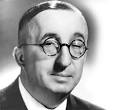
Ernst Heinrich Heinkel |
birth Ernst Heinrich Heinkel Born 24 Jan 1888; died 30 Jan 1958 at age 70. German aircraft engineer who built the first rocket-powered aircraft. He was chief designer of the Albatros Aircraft Company in Berlin before World War I. He founded the Heinkel-Flugzeugwerke at Warnemünde (1922), making at first seaplanes, and later bombers and fighters which achieved fame in World War II. He built the first jet plane, the HE-178 (1939), and the first rocket powered aircraft, the HE-176. After Adolf Hitler came to power, Heinkel's designs formed a vital part of the Luffwaffe's growing strength. Heinkel was a critic of Hitler's regime and in 1942 the government took control of his factories. At the end of the war Heinkel was arrested by the Allies but evidence of anti-Hitler activities led to his acquittal. |
|
27 Jan 1888
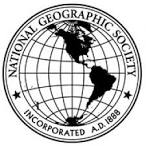
National Geographic Society |
National Geographic Society (geography) The National Geographic Society is founded in Washington, D.C. by Gardiner Greene Hubbard. |
|
14 Feb 1888
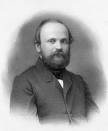
Robert Remak |
birth Robert Remak Robert Remak (died 1942), mathematician. |
|
17 Feb 1888

Otto Stern |
birth Otto Stern Otto Stern (died 1969), physicist, Nobel laureate in Physics in 1943. |
|
22 Feb 1888

Anna Kingsford |
death Anna Kingsford Anna Kingsford (born 1846), physician, anti-vivisectionist and vegetarian. |
|
09 Mar 1888

Robert Gordon Latham |
death Robert Gordon Latham Robert Gordon Latham (born 1812), ethnologist and philologist. |
|
15 Mar 1888

Squire Whipple |
death Squire Whipple Squire Whipple (born 1804), civil engineer. |
|
12 Apr 1888

Alfred Nobel's premature obituary |
Alfred Nobel's premature obituary In 1888, a French newspaper mistakenly published an obituary for Albert Nobel, inventor of dynamite, calling him “"a merchant of death.” The mistake was that it was actually Albert's brother, Ludwig Nobel, who had just died (at age 56, due to heart trouble). However, shocked by the newspaper's report, Albert Nobel began to seek a change in public opinion, which led to his decision to establish the Nobel Prizes. |
|
13 Apr 1888

John Hays Hammond Jr. |
birth John Hays Hammond Jr. Born 13 Apr 1888; died 12 Feb 1965 at age 76. U.S. inventor whose development of radio remote control served as the basis for modern missile guidance systems. Son of the noted U.S. mining engineer John Hays Hammond, he established the Hammond Radio Research Laboratory in 1911. By 1914, he had laid the foundations for all subsequent radio control, able to send an unmanned yacht on a successful 120-mile trip from Gloucester to Boston and back. With WW I just begun, Hammond added an anti-interference feature to prevent jamming. He also invented a target-seeking system that allowed a remote-controlled ship to home in on an enemy ship's searchlights; and he began work on the first radio-guided torpedo. By 1916, he had earned over 100 patents. |
|
01 May 1888
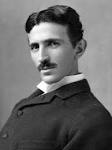
Nikola Tesla |
Nikola Tesla (technology) Nikola Tesla is granted a United States patent for the induction motor. |
|
03 May 1888

Sir Charles Tilston Bright |
death Sir Charles Tilston Bright Died 3 May 1888 at age 55 (born 8 Jun 1832). British engineer who superintended the laying of the first Atlantic telegraph cable. He supervised the laying of hundreds of miles of underground telegraph cables, throughout the British Isles, including the first cable under the sea between Scotland and Ireland, when just 21. He joined the new Atlantic Telegraph company as chief engineer to lay the first transatlantic cable. The first attempt (1857) ended when the cable broke 280 miles off the coast. The second attempt, a year later and was initially successful but with a weak electric signal. On 16 Aug 1858, Queen Victoria sent a message to U.S. President James Buchanan. This cable failed within a few weeks. He acted as consulting engineer for the second and third transatlantic cables of 1865 and 1866. |
|
13 May 1888
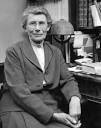
Inge Lehmann |
birth Inge Lehmann Inge Lehmann (died 1993) seismologist. |
|
15 May 1888

Emile Berliner |
Emile Berliner (technology) Emile Berliner is granted a US patent for the gramophone record. |
|
21 May 1888
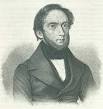
Friedrich Gerke |
death Friedrich Gerke Friedrich Gerke (born 1801), pioneer of telegraphy. |
|
29 May 1888

Lubricator |
Lubricator In 1888, another of his several dozen lubricating devices was patented by black American inventor, Elijah J. McCoy (U.S. No. 383,746). |
|
12 Jun 1888

Zygmunt Janiszewski |
birth Zygmunt Janiszewski Zygmunt Janiszewski (died 1920), mathematician. |
|
30 Jun 1888

Marine Biological Association of the United Kingdom |
Marine Biological Association of the United Kingdom (biology) The Marine Biological Association of the United Kingdom opens its laboratory on Plymouth Hoe. |
|
23 Jul 1888
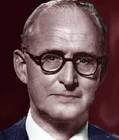
Ivan Magill |
birth Ivan Magill Ivan Magill (died 1986), anaesthesiologist. |
|
10 Aug 1888
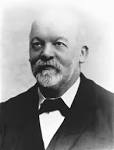
Gottlieb Daimler |
Gottlieb Daimler (technology) Gottlieb Daimler flies in an airship designed by Dr. Frederich Wölfert powered by a Daimler Motoren Gesellschaft-built petrol engine. |
|
13 Aug 1888

John Logie Baird |
birth John Logie Baird John Logie Baird (died 1946), inventor. |
|
15 Aug 1888
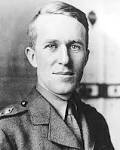
T. E. Lawrence |
birth T. E. Lawrence Born 15 Aug 1888; died 19 May 1935 at age 46. Thomas Edward (T.E.) Lawrence was a British archaeological scholar, also known as “Lawrence of Arabia,” was a British archaeological scholar, which activity he pursued assiduously from his teens up to the outbreak of WW I. In two of his important projects, he collaborated with Leonard Woolley in the British Museum Expedition excavating Carchemish, (1910-14) a Hittite city on the upper Euphrates; and in the Survey of the Wilderness of Zin. Later he became best known as a military strategist, and author for his legendary war activities in the Middle East during WW I, and for his account of those activities in The Seven Pillars of Wisdom (1926). He died in England from injuries sustained in a motorcycle crash near his home in Dorset. |
|
23 Aug 1888

Philip Henry Gosse |
death Philip Henry Gosse Died 23 Aug 1888 at age 78 (born 6 Apr 1810). English naturalist and science writer who wrote books illustrating such topics as Jamaican wildlife and marine zoology. Stephen Jay Gould called Gosse the “ David Attenborough of his day.” However, he did not accept the theory of evolution, and in his best-known book, Omphalos, he attempted to apply biblical literalism in a way still consistent with uniformitarianism. His premise in the book was criticized by both sides of the debate. He invented the institutional aquarium when on 21 May 1853, he opened the Aquatic Vivarium, the world's first public aquarium in Regent's Park, London. |
|
24 Aug 1888
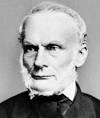
Rudolf Clausius |
death Rudolf Clausius Died 24 Aug 1888 at age 66 (born 2 Jan 1822). who was one of the founders of thermodynamics. In 1850, he stated the second law of thermodynamics. As a theoretical physicist, he also researched in molecular physics and electricity. In his published work in thermodynamics (1865) he gave the First and Second laws of thermodynamics in the following form: (1) The energy of the universe is constant. (2) The entropy of the universe tends to a maximum. In all Clausius wrote eight important papers on the topic. He restated Sadi Carnot's principle of the efficiency of heat engines. The Clausius-Clapeyron equation expresses the relation between the pressure and temperature at which two phases of a substance are in equilibrium. |
|
04 Sep 1888
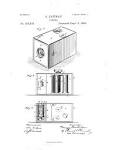
Kodak camera patent |
Kodak camera patent In 1888, George Eastman was issued a landmark U.S. patent No. 388,850 for his box camera. On the same date, he registered the trademark name: Kodak. The Eastman Kodak company was formed 24 Apr 1888. This design was the first Kodak mass-produced camera, and brought photography to the mass market. As described in its advertising, the operation was simple: "Pull the String, Turn the Key, Press the Button." Now anyone could take pictures family, events, indoor and outdoor scenes, and vacations, without needing special skills. Only 22-ounces in weight, it required no tripod or table for support. It used a fixed-focus lens which was still fast enough to take practically instantaneously exposures. Its roll film was enough to take 100 pictures, each 2½ inches diameter. |
|
04 Sep 1888
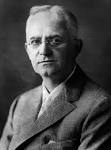
George Eastman |
George Eastman (technology) George Eastman is granted a US patent for his roll film camera, for which he registers the trademark Kodak. |
|
12 Sep 1888

Richard Anthony Proctor |
death Richard Anthony Proctor Richard Anthony Proctor (born 1837), astronomer. |
|
20 Sep 1888

David Marine |
birth David Marine Born 20 Sep 1888; died 6 Nov 1976 at age 88. American pathologist whose substantial research on the treatment of goitre with iodine led to the iodizing of table salt. During 1917-22 he ran a trial on a large group of schoolgirls to show that an iodine supplement dramatically reduced the incident of goitre (a major swelling of the thyroid gland in the neck). His results clearly showed the important of iodine in the diet. Dr. David. M. Cowie promoted the production of iodized table salt, first sold on 1 May 1924, and later throughout the U.S., greatly reducing the incidence of goitre. Marine worked on salt iodization for the World Health Organization, further spreading its benefits. (As early as 1821 French chemist Jean-Baptiste Boussingault had observed that iodine-rich salt could treat goiter.) |
|
03 Oct 1888
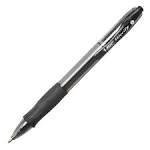
ballpoint pen |
ballpoint pen (technology) The first patent for a ballpoint pen is granted to John Loud, a British tanner who wishes to produce a writing instrument that can write on leather. |
|
14 Oct 1888
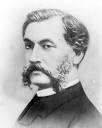
Louis Le Prince |
Louis Le Prince (technology) Louis Le Prince shoots the first recorded film, Roundhay Garden Scene, in Leeds, England, using a single lens camera and Eastman paper film. |
|
01 Nov 1888
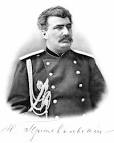
Nikolai Przhevalsky |
death Nikolai Przhevalsky Nikolai Przhevalsky (born 1839), explorer. |
|
15 Nov 1888

H. U. Sverdrup |
birth H. U. Sverdrup Born 15 Nov 1888; died 21 Aug 1957 at age 68. Harald Ulrik Sverdrup was a Norwegian meteorologist and oceanographer known for his studies of the physics, chemistry, and biology of the oceans. He explained the equatorial countercurrents and helped develop the method of predicting surf and breakers. As scientific director of Roald Amundsen's polar expedition on Maud (1918-1925), Sverdrup worked extensively on meteorology, magnetics, atmospheric electricity, physical oceanography, and tidal dynamics on the Siberian shelf, and even on the anthropology of Chukchi natives. In 1953, Sverdrup quantified the concept of "critical depth", explaining the onset of the spring phytoplankton bloom in newly stratified water columns. |
|
15 Nov 1888

Harald Ulrik Sverdrup |
birth Harald Ulrik Sverdrup Harald Ulrik Sverdrup (died 1957), meteorologist and oceanographer. |
|
20 Nov 1888

Timecard clock |
Timecard clock In 1888, Willard LeGrand Bundy, a jeweller, was issued the first U.S. patent for a time recording clock (No. 393,205). A workman inserted a key which actuating his number by engaging corresponding catches on a type-wheel mechanism. This printed his identification number and time on a paper tape. In this way, a company could save the expense of watchmen or time-keepers usually employed for the purpose of recording the time of arrival and departure of the employees. With his brother, Bundy formed the Bundy Manufacturing Company (1889), which later was consolidated into one of IBM's forerunners in 1902. Bundy clocks were also sold in England, where they were also used for time recording to regulate schedules on routes of trams and buses. |
|
24 Nov 1888
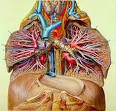
Eduard Pernkopf |
birth Eduard Pernkopf Eduard Pernkopf (died 1955), anatomist. |
|
07 Dec 1888

John Boyd Dunlop |
John Boyd Dunlop (technology) John Boyd Dunlop patents the pneumatic bicycle tyre. |
|
29 Dec 1888

Andromeda photographed |
Andromeda photographed In 1888, the Great Nebula in Andromeda, M31, was photographed by Isaac Roberts, with a 4-hour exposure using a 20-inch aperture reflecting telescope. It was undoubtedly his finest achievement, for it provided one of the best defined images up to that time. He was a pioneer in the technique of guiding an optical telescope to remain steadily pointed at a particular point in the sky, to compensate during a long-exposure for the rotation of the earth. In the same month, he presented his photographic evidence to a meeting of the Royal Astronomical Society, showing that Andromeda was of the spiral type, illustrating the main idea of the nebula hypothesis. He had made earlier photographs on 15 Nov 1887, and the first two days of 1887. He also successfully photographed other galaxies. |